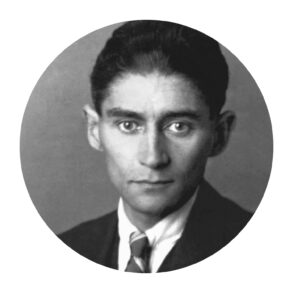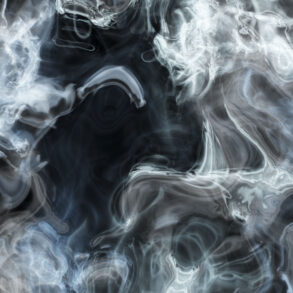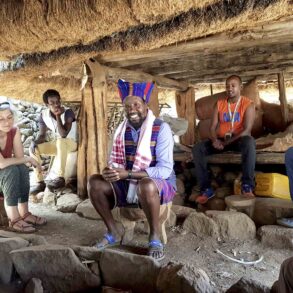We like to think of motherliness as a phenomenon of mothers. Looking at the image of a mother who has fled, I realize that it is a bigger force, active in a world that is in crisis. A comment.
The photograph is several years old, but when I saw the ‹Refugee Madonna› by Theo Heimann (see right) recently, I was immediately touched. Not only because it is tragic that, according to the UNCHR, around 79 million people worldwide are refugees, half of them being women and children. The conditions for refugees are more terrible than one can imagine. In addition to the terrible situation itself, women and children are particularly exposed to assault, exploitation, and forms of sexualised violence – not only in the crisis and war zones from which they flee and on the escape routes but also in Europe, in the reception camps that are ‹the best› that we – and by that I mean the entire European world – have prepared for them.
It makes me very upset to think about it. But the part of the picture that appealed to me most was the mother’s composure, which is timeless. It is not without reason that the painting was given the title ‹Refugee Madonna.›
One sees a mother with her very small child, who form a cosmos for themselves. The receptive mood that arises around the child, enveloped and held from the outside by a kind of veil, defines the main directions of the image. The fact that this protective veil is golden could almost seem romantisizing. But if I concentrate on what emerges here by chance as an image, then precisely this golden veil highlights the power that could be called motherliness. To draw a protective and yet permeable border for the intimacy, the warmth.
Due to the cross-legged position, the limbs of the person disappear almost completely and form a triangle pointing from the earth to the sky. The head also sinks down into the chest and tilts towards what lives in the center of this radiant heart-world: the child. Thus the center of this maternal being expands and creates an infinity within itself. In the midst of need, on a blanket on the floor, in the open, in the cold, motherliness can still form a space that is filled with vitality.

Culture Without a Center
Based on this image, I am working on the question of what motherliness actually is. Immediately, cross-connections arise in reflection: Fatherliness, in contrast, masculinity and femininity as close relatives. But I’m not talking about polarisation or biologisation; I mean, motherliness is a force of the world that lives in every person, regardless of motherhood and womanhood and whatever they mean today.
The phenomenon is human maternity, whose complete devotion and commitment cannot be breached by the outside world.
This primal maternal sight of the refugee also makes it clear to me how little room westerners leave for motherliness. How could they? Isn’t our culture more like a bunch of heads without bodies and feet running away from the heads? But motherliness lives and creates a center. It is perhaps the one elemental force in the human being that grips the human being in its midst. Motherliness creates a space within a space arising from the human center. Its consciousness is directed towards maintaining an inner space, not for itself alone, but for something else, which can only mature within it to become capable of surviving on its own. In this way, the maternal forces of the center contribute to the maturation of the independent center of their seedling.
Making space for something unknown inside me and protecting that unknown is part of the world’s motherliness.
The Emerging Space
Making space for something unknown inside me and protecting that unknown is part of the world’s motherliness. Fatherliness as an associated elemental force seems to come from the center as well, but opens up to the world outside the shell. It creates a perception of the environment and for the effectiveness of my being. In this way, a center, inside and outside of the two elemental forces, a liveliness can develop. By forming shells and surrendering, I become able to take something that I am not and let it flourish within me. By surrendering beyond my shells, I become able to release something of myself, where I am not, and give it to others. At this point, I have to correct myself and say: motherliness and fatherliness are two interrelated phenomena (in every human being) that only make sense in their interplay, and there is currently little publicity for either.
The child in front of the ‹Refugee Madonna’s› heart is the center of the picture. Through it the mother becomes architecture; she becomes her child’s house. The child’s gaze goes out and opens the structure. Its view of the world is the eye of this world-in-itself. This gaze shines through the shell and questions the world. For me, looking at this concrete image raises the question of the whole world’s motherliness. It is not only my motherliness that feels affected but the motherliness of humanity. It’s Christmas 2020. Can something grow there that lives in devotion to the well-being of the other person, to his or her own being? Translator: Simone Stadlbacher













